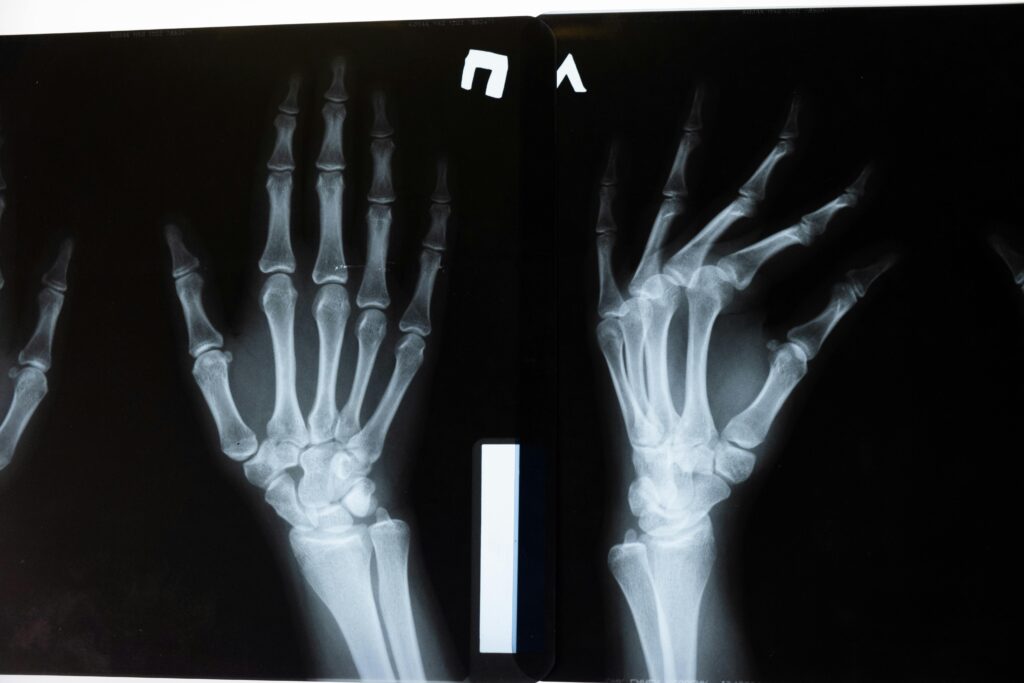Wrist fractures are among the most common fractures treated in hospital emergency rooms and are the most frequent upper extremity fractures in older adults. If you suffered a wrist fracture, it will involve either the forearm bones leading into the wrist—the radius and the ulnar bones—or the carpal bones of the wrist. The radius bone is the most commonly injured in a wrist fracture. If your wrist fracture involved one of your eight carpal bones, the most frequently injured is the scaphoid bone.
When Is a Missed Wrist Fracture Considered Medical Malpractice?
Two significant factors determine whether you have a claim against a hospital, urgent care center, or doctor for missing your wrist fracture. The first is whether it was negligent or a breach of the standard of care to miss your wrist fracture. The second is whether the delay in treatment affected the outcome, meaning whether your wrist fracture is now significantly worse because it was missed and treatment was delayed.
How Do Medical Providers Negligently Miss a Wrist Fracture?
One way a doctor or other medical care provider can be negligent in missing your fracture is if the individual reviewing the X-rays and other imaging taken of your wrist fails to identify the fracture. To determine whether a wrist fracture should have been detected in your imaging, your attorney will consult with medical experts such as radiologists and orthopedic doctors. Sometimes, your own treating doctors may inform you that the initial X-rays of your wrist did show a fracture.
Failure to Order Proper Imaging in Wrist Injury Cases
Your medical care provider could also be negligent for failing to consider a wrist fracture and not ordering imaging to rule out a break. Whether this constitutes negligence depends on the nature of your injury and symptoms. For example, if you fell from a significant height and injured your wrist, a fracture should likely have been considered and ruled out. Severe pain, swelling, numbness in the fingers, stiffness, and tenderness of the wrist are all signs that a doctor should investigate further.
Miscommunication Among Medical Providers Can Lead to a Missed Diagnosis
In some rare cases, a wrist fracture may be identified in X-rays, but due to miscommunication among medical care providers, you are never informed of the diagnosis. This type of claim depends on what is noted in your medical records. For example, a radiologist may have recorded a wrist fracture in your imaging report, but if your discharge diagnosis does not include it and you were never told, this could be considered negligence.
How a Missed Wrist Fracture Can Lead to Severe Complications
If you can prove that missing your wrist fracture was negligent, you must also show that this negligence caused harm. This typically means you required more extensive and expensive care and now have lasting limitations with your affected wrist and hand—complications that could have been avoided with a timely diagnosis.

A common example is when a nondisplaced fracture becomes a displaced fracture due to delayed treatment. A nondisplaced wrist fracture occurs when the bones remain aligned and can typically be treated with immobilization using a splint or cast. However, if the fracture is not immobilized properly, the bones may separate, resulting in a displaced fracture, which often requires surgical intervention. Delayed treatment can also increase the risk of post-traumatic arthritis, a degenerative condition that causes chronic pain and joint dysfunction.
Additional Risks from a Delayed Wrist Fracture Diagnosis
Even if your wrist fracture was already displaced, a failure to receive timely surgical treatment could result in the bones healing improperly or not at all. Healing in the wrong position, known as a malunion, or failing to heal entirely, called a nonunion, can require further surgery, sometimes even necessitating the rebreaking of the bone.
Additionally, a delayed diagnosis may lead to avascular necrosis, a condition where the loss of blood supply to the bone causes tissue death and collapse. This can result in permanent loss of wrist and hand function, especially if treatment is significantly delayed.
Compensation for a Missed Wrist Fracture Claim
If your missed wrist fracture resulted in additional harm, you may be eligible for compensation through a medical malpractice lawsuit. You can seek damages for:
- Pain and suffering caused by the delay in treatment
- Medical expenses for treatments that could have been avoided
- Future medical costs resulting from complications
- Lost wages if you missed work due to surgery or extended recovery
- Loss of future earning capacity if you can no longer perform your job due to wrist and hand limitations
To determine whether you have a viable medical malpractice case, your attorney will obtain and review your medical records with expert witnesses. If you believe your wrist fracture was misdiagnosed or ignored, you may have a case.
Contact an Experienced Medical Malpractice Attorney
The medical malpractice attorneys at Thistle Law have extensive experience handling missed fracture claims and advocating for injured patients. If you or a loved one suffered complications due to a missed wrist fracture, contact Thistle Law today at 215-568-6800 for a free consultation.

